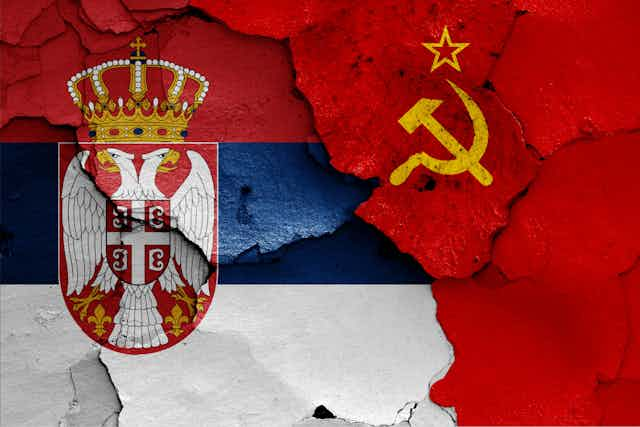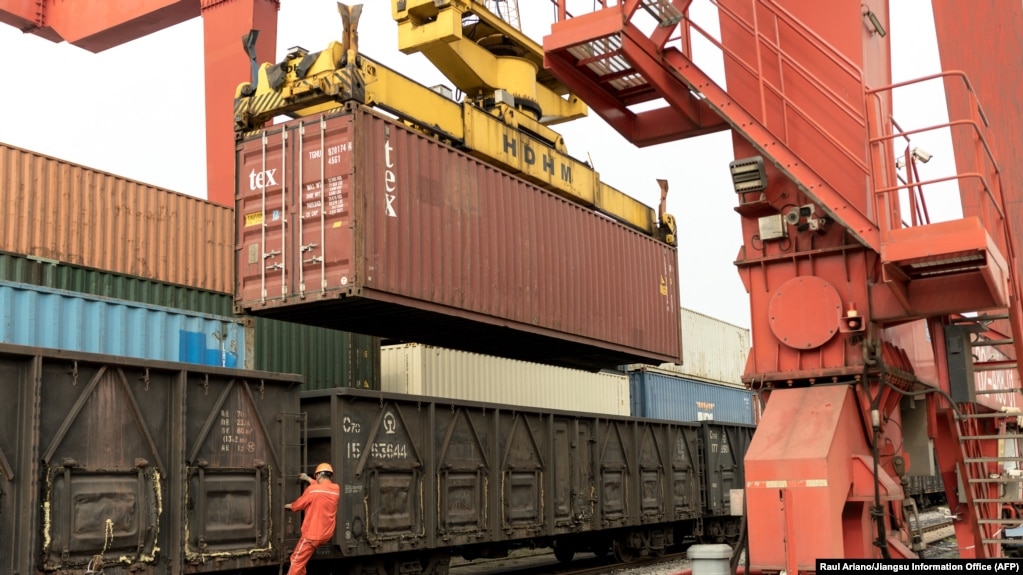Story by Kathrine Frich • 14h
According to Gajić, this sentiment is clouding Western perceptions of Russia's role on the global stage Tass reports.
Gajić emphasized that Serbia has maintained its strong ties with Russia, even amidst intense pressure from Europe to impose sanctions.
“Despite the massive pressure and anti-Russian hysteria in Europe, Serbia has not imposed sanctions against Russia,” Gajić said.
- He expressed hope that the bilateral cooperation between Serbia and Russia will continue to improve, highlighting that Europe needs to recognize that Russia is not its enemy.
Also read >>
Serbia Shifts Military Alliances Amid Ukraine Conflict
Russia is Not Its EnemyGajić pointed out that no significant international decision can be effectively made without Russia's involvement.
- He suggested that over time, Europe will come to understand that Russia's participation is crucial for addressing major global issues.
Serbian President Aleksandar Vučić has previously affirmed the strong relationship between Serbia and Russia, asserting that it will remain positive despite opposition from various quarters.
Welcome back to the China In Eurasia briefing, an RFE/RL newsletter tracking China's resurgent influence from Eastern Europe to Central Asia.
I'm RFE/RL correspondent Reid Standish and here's what I'm following right now.
Welcome To The New Eurasia
In the heart of Eurasia, a new trade route made up of thousands of kilometers of roads, railroads, and ports is emerging to better connect China to Europe and redraw the lines of global trade.
Take a deeper look through this new interactive map done by myself and my colleagues Wojtek Grojec and Ivan Gutterman.
Finding Perspective: The so-called Middle Corridor is a 6,500-kilometer trade route connecting China to Europe through Central Asia and the Caucasus. Since 2022, it's been growing steadily, with trade volumes skyrocketing and new investments into things like ports and highways from investors in Europe, China, and the Middle East.
According to a World Bank study released in late 2023, trade volumes along the Middle Corridor could triple by 2030, reaching 11 million tons.
That's a big turnaround for a route that has existed in some form for years but was largely avoided by shipping companies due to rising costs, unpredictable border crossings, and a lack of high-quality infrastructure.
Before Russia's full-scale invasion of Ukraine in 2022, the majority of overland trade between China and the EU traveled north through Russia and used its well-developed rail network to carry goods between the two massive markets.
But the outbreak of war changed all of that. With new sanctions in place on Russia's economy, Western governments and major shipping companies were left searching for alternatives as they looked to bypass Russia and plan for the reality of a long war in Ukraine.
What Comes Next? While its use is growing, the uptake in traffic along the Middle Corridor has laid many of these limitations bare and raised questions about whether it can live up to its potential.
Despite being a shorter distance, there are huge issues with wait times and customs procedures that currently make the Middle Corridor a longer journey than going north through Russia.
On top of that, the economic opportunity opened up along the route has also exposed new geopolitical battlegrounds that could determine if the Middle Corridor gets bogged down or not.
Central to this is China. Without its demand and interest for using the route, the Middle Corridor doesn't make much sense.
But while Beijing has generally been hesitant about the route, it appears to be warming up to it.
In May, a Chinese consortium was awarded a contract to build and manage a deep-sea port in Anaklia on Georgia's Black Sea coast.
Georgian officials -- who have increasingly turned to China for large infrastructure projects in recent years -- have also begun to call for Beijing to join the official Middle Corridor body, which could open up new cooperation and investment opportunities.
Why It Matters: While the Middle Corridor is often sold as a route connecting Europe and China, its biggest value could be in creating internal trade between Central Asia and the Caucasus around the Caspian Sea.
World Bank projections say that trade between Azerbaijan, Georgia, and Kazakhstan could increase 37 percent by 2030 and 28 percent between those countries and the European Union.
While that may not be much on a global scale, it's a big deal for one of the world's least-connected regions that has long struggled with being plugged into the flows of international trade.
Three More Stories From Eurasia
1. New Investigation Into China's Gold Mining In Tajikistan
My colleagues at RFE/RL's Tajik Service spent the last year investigating a collection of Chinese-run mining projects in Tajikistan, where the government is turning a blind eye to environmental degradation in order to not jeopardize a vital stream of foreign investment.
The Details: One high-level official from the Environmental Protection Committee, Tajikistan's main environmental agency, told RFE/RL on condition of anonymity that the state body had been ordered to turn a blind eye to any environmental or health issues stemming from a Chinese-run gold mine in Zarafshon.
"We also have complaints about environmental pollution, but if we put too much pressure on Zarafshon or increase inspections and fines, the Chinese investor may leave Tajikistan," he said. "This would be very harmful for our economy because [the Chinese company] produced some 2.2 billion somonis ($201 million) worth of [gold] in six months of 2023."
Further reporting from my Tajik colleagues shows how this pattern is replicating itself at other Chinese-owned mining sites across the country, with air pollution, health problems, and a mass die-off of fish plaguing nearby communities.
The poorest country in Central Asia, Tajikistan's economy has struggled over the years as it has grappled with the fallout from a devastating civil war in the 1990s and has relied on Russia for trade, investment, and loans.
But autocratic President Emomali Rahmon, who has ruled Tajikistan with an iron fist since 1994, has moved the country closer to Beijing and is an enthusiastic member of the Belt and Road Initiative (BRI).
Since 2010, China has emerged as the country's largest trade partner, foreign investor, and lender, with Beijing owning more than half of Dushanbe's foreign debt.
This translates into growing political influence from Beijing and an economic dependence on China that has Tajik officials looking the other way to poor mining practices that are harming local communities.
Read the full investigation by RFE/RL's Tajik Service here.
Ukraine's Top Diplomat Goes To China
Ukrainian Foreign Minister Dmytro Kuleba is currently in Beijing as part of his first visit to China since Russia's full-scale invasion.
What It Means: The three-day visit began on July 23, with Ukraine's top diplomat traveling at the invitation of Wang Yi, his Chinese counterpart.
After landing, Kuleba said in an Instagram post that he would use his trip to develop contacts between Chinese and Ukrainian leaders and that he would be having "extensive, detailed, [and] substantive negotiations" with Wang over how to reach a peace settlement for the grinding war that is now in its third year.
"We must avoid competing peace plans. It is very important that Kyiv and Beijing conduct a direct dialogue and exchange positions," Kuleba said.
The trip comes as various peace initiatives have emerged in recent months against the backdrop of prolonged fighting and uncertainty ahead of the U.S. presidential election in November that could see the return of former President Trump, who has threatened to limit aid flows to Ukraine and push for talks between Kyiv and Moscow that could quickly end the war.
Across The Supercontinent
China's Palestine Diplomacy: Palestinian factions including rivals Hamas and Fatah have signed an agreement on "ending division and strengthening Palestinian unity" in Beijing.
Supply Chains: Amid competition between China and the West for rare-earth minerals and the supply chains of the future, German Chancellor Olaf Scholz will head to Belgrade to discuss a new partnership with Serbia on lithium mining, RFE/RL's Balkan Service reports.
The Economic Engine: As Western companies quake at the latest onslaught of cheap Chinese goods, a similar drama is playing out in China, where manufacturers are struggling as Beijing boosts industrial capacity without stimulating new demand, The Wall Street Journal reports.









No comments:
Post a Comment